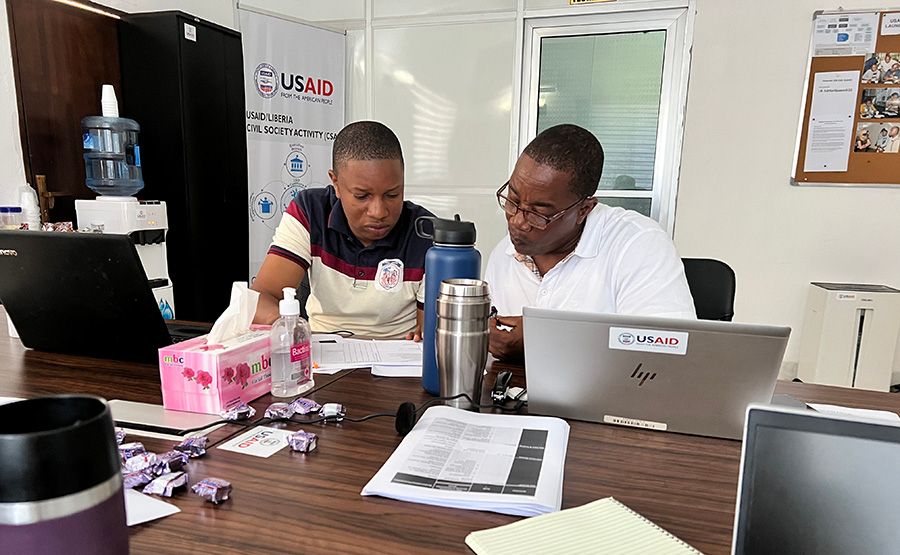Climate change works against the achievement of all the Sustainable Development Goals, from poverty reduction and food security to institution and capacity building. Recent World Bank estimates show that inaction on climate change will force 100 million more people into extreme poverty by 2030. Floods and droughts, reduced water supplies, and the loss of viable agricultural land all strain state capacity to provide protection and public goods. In already-weak states, climate change acts as a “threat multiplier.”
Government must take the lead in confronting such threats. National and subnational institutions determine how effectively each country integrates climate commitments into action through the laws, systems, and procedures at its disposal. The previous two decades of climate change governance work have provided valuable insights into the design and delivery of climate action, with key lessons emerging on how to leverage governance mechanisms. Following are six lessons we have learned, in part through our experience implementing DAI projects in East Africa, Central America, Southeast Asia, and beyond.

Photo: USAID Indonesia APIK.
Reinforce Strategic Leadership
Climate change governance requires raising awareness and building strategic capacity both at the institutional level and within individual leaders. Establishing leadership for climate change might include creating a dedicated cabinet committee for that purpose; elaborating a long-term strategic plan that defines climate-sensitive national priorities; promoting an intra‐governmental coordinating committee; and introducing regular reporting to parliament. The European Union (EU)-funded Clima-Med project, for instance, advised national and local leaders on regional governance approaches aligned with their national and subnational strategies. The Strengthening Adaptation and Resilience to Climate Change in Kenya Plus project worked with political leaders at national and subnational levels toward implementation of the 2016 Climate Change Act, supporting diverse initiatives that helped to build resilience across a number of sectors.
Invest in a Climate Public Expenditure and Institutional Review (CPEIR)
A CPEIR involves a climate-focused political economy analysis (PEA) based on structured stakeholder interviews and analysis to identify climate-related expenditures, understand the network of interests at play, and calculate the likely costs and benefits of climate reforms. The PEA will consider, for example, the entrenched business and political interests in the country, and the potentially uneven impact of climate change across groups and communities. Similarly, at the internal government level, ministries with economic, industry, or trade portfolios may resist climate action if they believe it will harm gross domestic product or impede short-term growth. Failure to understand this local and institutional context and its particular distribution of power, interests, beliefs, and expectations is likely to impede reform. (The CPEIR process dovetails well with the Climate Change Financing Framework, discussed below.)
A well-executed CPEIR will:
- Yield a deeper understanding of how much government spends on delivering climate change policies.
- Clarify public and private finance flows in the climate change sector.
- Evaluate the degree to which the national strategy is being translated into plans, budgets, and monitoring systems.
- Provide evidence on which to base policy and spending decisions.
- Delineate the responsibilities of institutions involved in managing the response to climate change.
- Design and review carbon tax policies with relevant stakeholders.
- Review the capacity of the institutions involved in climate change policy coordination, planning, budgeting, execution, and monitoring.
Connect Climate Change and Sectoral Policies
It is important to strengthen the capacities of climate change units in line ministries and agencies, particularly to improve the links between planning and budgeting and to support the preparation and implementation of climate change budget programmes. Development partners should work alongside national agencies to build integrated strategies and capacities for disaster risk management, from comprehensive risk assessments to (financially viable) early warning and response systems. The DAI-managed Climate Smart Mainstreaming into the Productive Safety Net Programme in Ethiopia, for example, aligns early warning systems for disaster risk management with social protection programmes to mitigate climate-related risks.

Photo: USAID Indonesia APIK.
Facilitate Climate Change Financing Frameworks (CCFF)
Comprehensive financing frameworks that span multiple years endow government action with predictability, transparency, and credibility. These frameworks make explicit assumptions about the mobilisation of public and private resources to meet climate change targets and bring these resources into national planning and budgeting systems. In Indonesia, for example, the DAI-led Adaptasi Perubahan Iklim dan Ketangguhan (APIK) project integrated climate adaptation and disaster risk management within national and subnational systems, so that climate policies, laws, and regulations are consolidated in medium-term financial frameworks. Having long-term plans that are subject to regular review allows governments to consolidate private and public finance into a coherent fiscal architecture. A CCFF facilitates more accurate monitoring, tracking, and reporting of climate investments, which will, in turn, create an enabling environment for the flow of international climate finance.
Engage with the Private Sector
Climate targets will not be met with public resources alone: They require engaging the business community and leveraging private finance within a public policy framework. Governments play a central role in engaging the private sector through new regulations, incentives, and fiscal policies—possibly including a carbon tax, modified electricity tariffs, or the removal of fossil-fuel subsidies, among other options. But communication is particularly crucial when engaging with the private sector: regulation and incentives to adopt sustainable business models may backfire if they are not based on sound sectoral analysis and stakeholder engagement, for example; companies may be unaware of green business opportunities; they may be reluctant to engage with state agencies on investments perceived as too risky; and public-private dialogue can be a challenge in places with a legacy of corruption and mistrust.

Photo: FCDO Kenya STARK+.
But successes are certainly possible. The Honduras ProParque and Gobernanza en Ecosistemas, Medios de Vida, y Agua, projects, for example, facilitated public-private dialogue on sustainable agriculture and ecotourism and advised enterprises on opportunities and promotion strategies. In Kenya, a DAI project improved coordination between financial institutions, climate information providers, and the private sector along agricultural value chains.
Engage Civil Society for Dialogue and Behaviour Change
To be sustainable at scale, adaptations to climate change must extend to the whole of society. Outreach to civil society organizations and the broader public promotes a climate of dialogue and inclusion. Awareness-raising campaigns are effective tools to foster behaviour change at the community level around climate adaptation and disaster risk management, as experiences in Honduras, Ethiopia, and Indonesia, or in the Mediterranean region suggest.

USAID Honduras ProParque.
In 2019, Clima-Med organised a Regional “Planting Day” to engage citizens and local authorities from the South Mediterranean to plant trees in their communities. The main objective of this action was to raise awareness of a wide audience, with a particular focus on young people, on the need to care for the environment. More than 20 South Mediterranean municipalities and more than 2,000 community members participated in the awareness action. Posters with images from the campaign were curated in an exhibition, organized at the European Union Pavilion at COP25 in Madrid.
Climate change shocks and stress factors influence peace and stability, economies and livelihoods, and the resilience of households, communities, and public bodies. Our experience confirms the need for political leadership and vision and suggests that local and national governments can provide critical support for inclusive climate action.
Gianfabrizio Ladini is a Project Director based in our Brussels office and Debora Marignani is a governance specialist and a former DAI staff member. She currently works as a policy officer at the European External Action Service. She co-wrote this paper while working at DAI.




